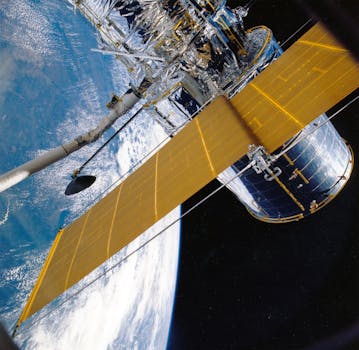
GEO Satellites: Introduction to Geostationary Satellites
GEO satellites, or geostationary satellites, are a type of satellite that orbits the Earth at an altitude of approximately 36,000 kilometers above the equator. At this altitude, the satellite’s orbital period matches the Earth’s rotational period, allowing it to remain stationary in the sky. This unique characteristic makes GEO satellites ideal for a variety of applications, including telecommunications, weather forecasting, and Earth observation.
History of GEO Satellites
The concept of geostationary satellites was first proposed by science fiction writer Arthur C. Clarke in 1945. However, it wasn’t until the 1960s that the first GEO satellite, Syncom 2, was launched. Since then, hundreds of GEO satellites have been launched, with many more planned for the future. The development of GEO satellites has been driven by advances in technology, including improvements in rocket launch systems, satellite design, and materials science.
Technology and Applications of GEO Satellites
GEO satellites use a variety of technologies to operate, including solar panels for power, propulsion systems for station-keeping, and transponders for communication. The applications of GEO satellites are diverse and include telecommunications, such as television broadcasting and mobile phone networks, as well as weather forecasting, Earth observation, and navigation. GEO satellites are also used for scientific research, including studying the Earth’s climate, oceans, and land surfaces.
Advantages and Challenges of GEO Satellites
GEO satellites have several advantages, including high bandwidth, wide coverage area, and long lifespan. However, they also face several challenges, including signal latency, interference from other satellites, and the risk of space debris. To overcome these challenges, satellite operators and manufacturers are developing new technologies, such as advanced propulsion systems and more efficient transponders.
Conclusion
In conclusion, GEO satellites are a crucial part of modern telecommunications and space exploration. With their unique characteristics and diverse applications, they play a vital role in connecting the world and advancing our understanding of the Earth and the universe. As technology continues to evolve, we can expect to see even more innovative applications of GEO satellites in the future.